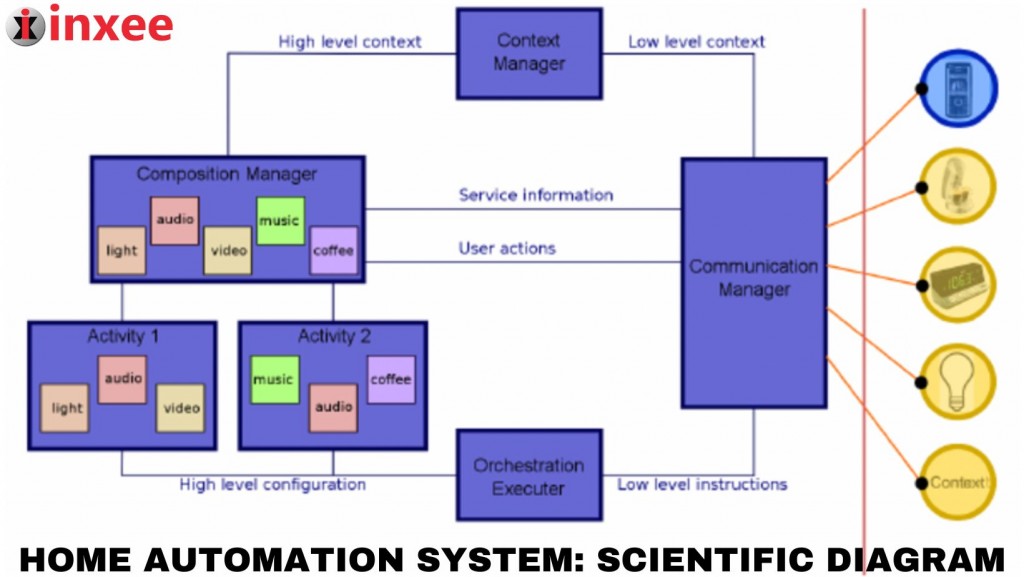Home Automation Systems: Scientific Diagram
The Home Automation Architectural System consists of two major parts:
the internal system on the left, and external entities (services, context sensors, users via user interfaces) on the right. All communication passes through the Communications Manager. It communicates with all sensors and actuators in their own protocol and ensures that the other devices should not care about different protocols being in use.
There are three types of information flows that enter the system: a device that sends information about its services (e.g. coffee), context sensors that provide information about the current situation (e.g. a light sensor), or users that provide information through a user interface (e.g. an interactive display in the house) to change or activate some settings. The information from the sensors (the low-level context) is sent to the Context Manager which reasons and infers high-level context, which is then forwarded to the Composition Manager. For example. a Bluetooth sensor reports the presence of a smartphone.
The Context Manager then finds where the sensor is located (the living room) and who owns the smartphone. This way high-level context information is derived. Besides high-level context information, the Composition Manager also obtains information about the various services in the system, and this in the form of ontologies. As mentioned earlier, the services are grouped into blocks with similar functionality (e.g. light, audio, video, etc.). The user can use these blocks to assemble a new composition. The Composition Manager helps by just showing the blocks that are currently relevant (those whose devices are currently available).
Finally, the composition needs to be enforced for the various services. The Orchestration Executer is responsible for converting the information of the various blocks into the service specific implementations. This conversion is only possible if the ontologies of the services contain enough information about their control and data flow.










Leave a Reply